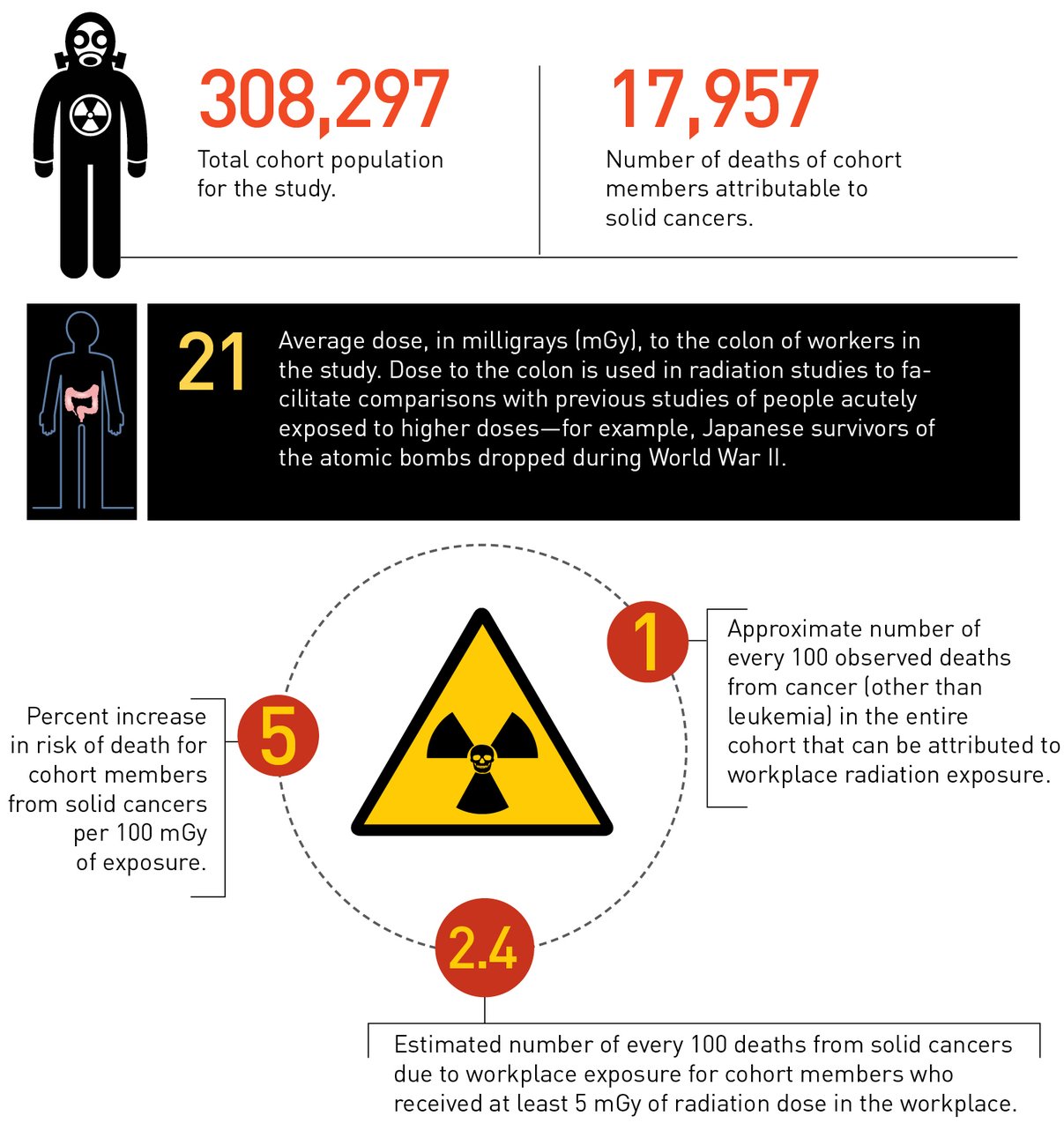DEPARTMENTS
BY THE NUMBERS
Ionizing Radiation and Solid Cancers
A study coordinated by the International Agency for Research on Cancer (IARC) and published online Oct. 21 by The BMJ (formerly the British Medical Journal) established an association between low doses of ionizing radiation and increased risk of death from solid cancers, or cancers that affect “solid” organs such as the breast or prostate. The International Nuclear Workers Study (INWORKS) evaluated exposures of nuclear workers in France, the United Kingdom, and the United States during the period 1944 through 2005. All workers included in the study were employed in the nuclear industry for at least one year and monitored for external radiation exposure through the use of personal dosimeters. Selected results from the study appear below.
SOURCES:
The BMJ: “Risk of Cancer from Occupational Exposure to Ionizing Radiation: Retrospective Cohort Study of Workers in France, the United Kingdom, and the United States (INWORKS)”
IARC: “Low Doses of Ionizing Radiation Increase Risk of Death from Solid Cancers” (PDF)


From the IARC press release:
“‘The findings are important not only for the protection of workers in the nuclear industry but also for medical staff and the general population, since the level of dose received by nuclear workers in the workplace is comparable with doses received by patients who could be repeatedly exposed in multiple computed tomography (CT) scans or in interventional radiology procedures,’ says IARC researcher Dr. Isabelle Thierry-Chef, one of the authors of the study. ‘This stresses the importance of striking a balance between the risks and the benefits of such medical imaging procedures.’”
From the IARC press release:
“‘The findings are important not only for the protection of workers in the nuclear industry but also for medical staff and the general population, since the level of dose received by nuclear workers in the workplace is comparable with doses received by patients who could be repeatedly exposed in multiple computed tomography (CT) scans or in interventional radiology procedures,’ says IARC researcher Dr. Isabelle Thierry-Chef, one of the authors of the study. ‘This stresses the importance of striking a balance between the risks and the benefits of such medical imaging procedures.’”
thesynergist | TOC | NEWSWATCH | DEPARTMENTS | COMMUNITY
Editor's Note: Fumes vs. Vapors
The original wording from the Center for Public Integrity's report "Common Solvent Keeps Killing Workers, Consumers" mistakenly refers to "fumes" in a context where "vapors" is the correct term. The Synergist has corrected this error in the digital edition.
Unfortunately, the error found its way into the print version of the November issue. The Synergist regrets the error and will publish a correction in the December issue.
Ed Rutkowski, editor

